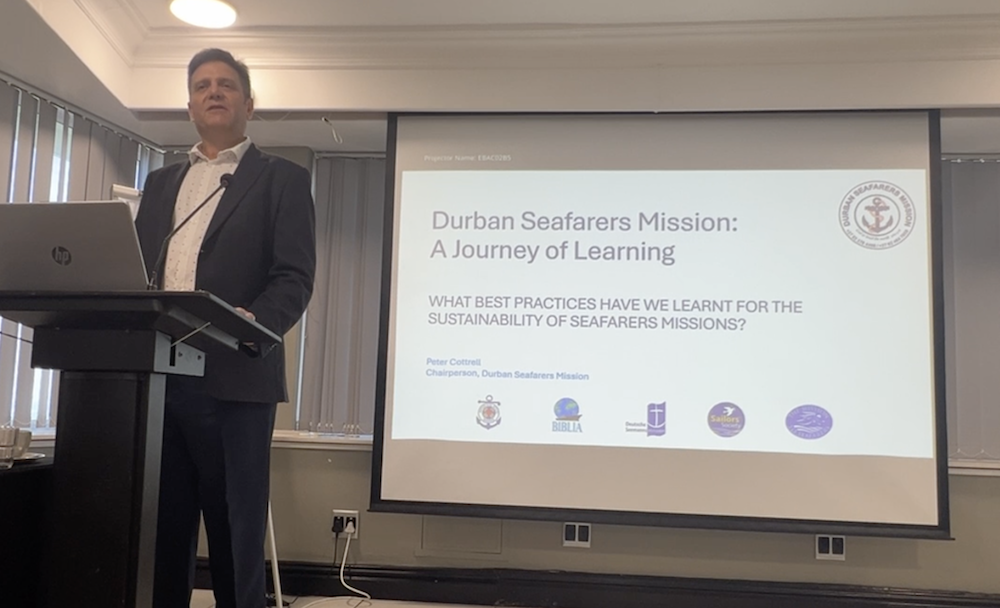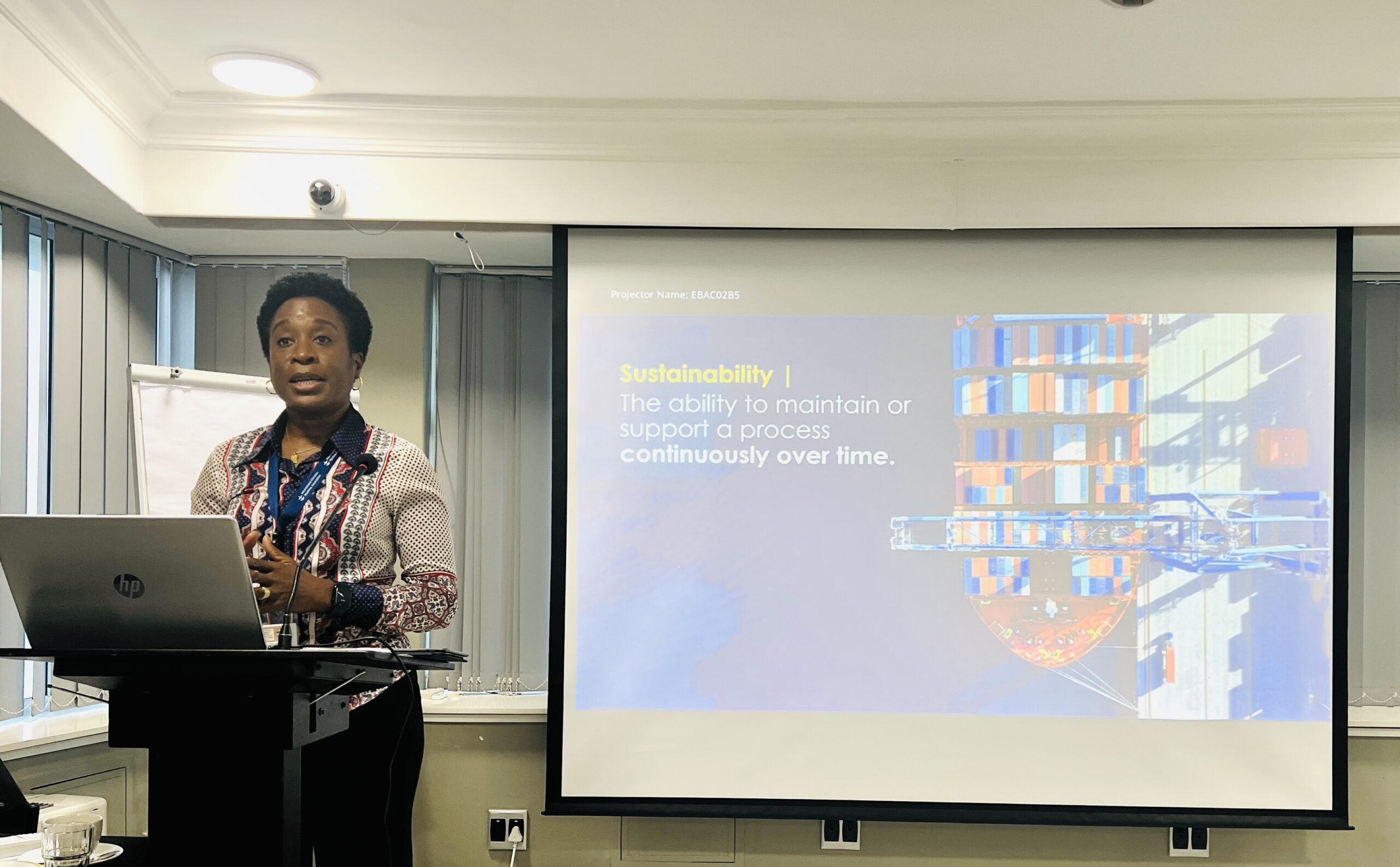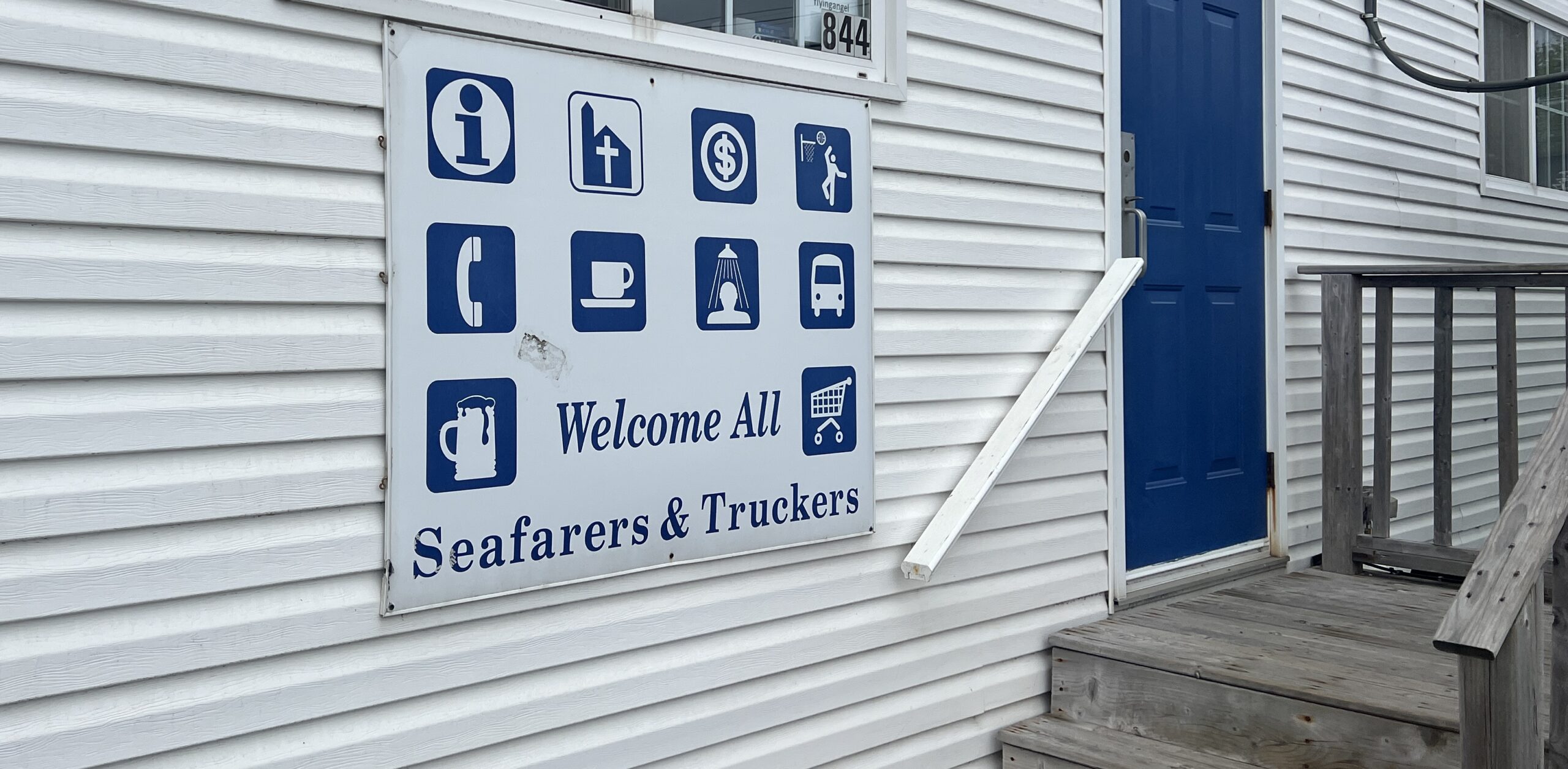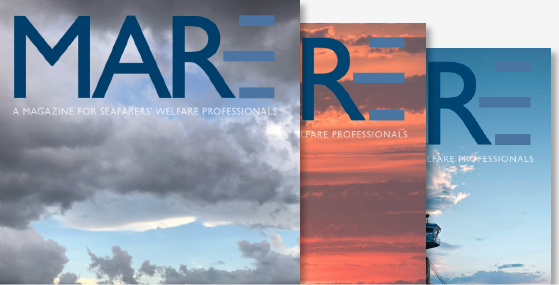MARITIME MINISTRIES TRAINING CONFERENCE
The Apostleship of the Sea, The Mission to Seafarers, and other Ecumenical Partners
held at Mary MacKillop Place, North Sydney, 11 -14th February 2019
BUILDING BRIDGES: CONFERENCE SUMMARY
by Mr. Graham Miller, Manager, The Mission to Seafarers Townsville, Australia
When I first saw the Conference program sheet, I immediately noted three secular icons pictured across the top – the Sydney Harbour Bridge, the Sydney Opera House and the NZ Fern representing our venue and regions. However, one image stood out in what we have been developing between the MtS and AoS…
‘The Bridge in Curve’ by Grace Cossington Smith, a Sydney artist recognised as a great Australian artist of the early modern period. In her painting here, there is an aura of colour that surrounds the construction into the sky from the ongoing construction of the bridge. The cool, soft colour which follows the forms of the bridge and the buildings focuses the eye on the actual work being done to complete the structure. The effectiveness of this painting for participants at the conference is that the artist has emphasised the task of building, rather than the completion with the activity, the energy and plain hard work required to achieve the final creation.
I chose this painting as a symbol of what the various maritime ministries were meeting for during the week’ conference as the AoS and MtS reach out in the bridge-building of shared ministry to the seafarers who visit Australia and Oceania. Also of note is the symbolism of metal and rivets in the creation of the bridge, of welding and safety issues, of pay, and use of international workers all involved in its successful construction.
Many millions of people have crossed the harbour since it was completed, proving that sturdy construction and continuous maintenance is a symbol for the work ahead. Any bridge building requires attention – to maintain, to enhance, to prove itself worthy of carrying humanity safely, while being admired world-wide for its presence.
When asked once about her painting, Grace Cossington Smith quoted that the colour in her painting, ‘must be colour within colour, it has to shine: light must be in it.’ [1]
As Christians, we have a special relationship with light; and we pray that the light of Christ shines forth from our centres; from the presence of the ship visitors; that seafarers might recognize Christ’s presence throughout our network of centres and our ship visiting ministry, dedicated to caring for the seafaring stranger.
We also share a history of working, sometimes with, sometimes alongside and sometimes against each other is this ministry of caring and sharing the Light of Christ in our various port ministries.
It wasn’t lost on me that we might in the past have referred to the ‘Bridge…. over Troubled Waters’, but then I looked at the lyrics again…that ‘Bridge Over Troubled Water’ is in fact a phrase which Paul Simon took from a Baptist church hymn. He liked the phrase and he used it. What appears superficially to be a song of sorrow, is in fact a song to do with ‘being there’ – for someone, a helping hand when things become too difficult – ‘when darkness comes’ and ‘pain is all around’. And, once again, we are reminded of the maritime ministry of caring – no matter the creed, the colour or the country.
On Tuesday, Feb. 12, Dr. Jason Zuidema spoke of WELCOMING the stranger, the command of Jesus in Matthew’s Gospel: 25 31 – 40 and VISITING with seafarers as seen in the Letter to James, 1:27. This welcoming and visiting is the ministry we offer from both great organisations; and is as important today as it was in the days of our beginnings, with men and women ‘Doing what you can with the means at your disposal and leave all the rest calmly to God’ slightly paraphrasing the words of St Mary of the Cross MacKillop’s.
The delegates were also asked to reflect on our personal perceptions of seafarers – and for us to encourage ‘positive rather than negative perspectives’ among our centres and ship visitors.
We observed during our talks that ‘the seafarer really doesn’t care too much about who is offering the assistance – they simply cherish that fact that help is there…that ‘being there’ for them is what is required.’
Today’s seafarer brings complex issues to our ship visitors, clergy and volunteers beyond that of a purely spiritual nature. We hear cries for help in issues of justice and welfare, of unjust work practices and mental health, of depression and abuse. Everyone who visits seafarers on board, or has crew speak quietly to them in our centres understands this. This is important as we see the commonality of what we see and hear daily in our work of caring.
It is also important that we remember that carers require nurturing as well, that training and debriefing is important. For every seafarer on board the ship visited, or who enters our seafarers’ centres has a story to tell – whether Christian, Hindu, Muslim, Buddhist or any other faith or philosophy or none! Many of these stories remain with us long after they depart, and some at least require further discussion among our peers. We were encouraged to have weekly meetings [over coffee] to share and de-brief. In all of this we were reminded – ‘that whatever we take on board the ship, the most important part of the ship visiting package is YOU! …as we heard from stories of listening and being there!
During the week, we also looked at the ‘History and Models of Ministry’ in Maritime Ministry. Originally, AoS, MtS, and our ecumenical partners began with the purpose of providing pastoral care of a spiritual nature to the various crews over the decades; and this aspect remains the core of maritime ministry – providing spiritual guidance and the sacraments of our Churches, nurturing Christian belief for Christian seafarers, all the time being Christ’s channel of care and love to those outside our faith system through our actions and prayer.
But, we are keenly aware that Maritime Ministry and Seafarers’ Clubs must undergo continual change to keep abreast of the challenges and opportunities…that the dormitories, dances, and ‘sparkling personalities’ of the past; [a reference to a video of the Seamen’s Clubs around the mid-20th Century,] are part of a wonderful heritage; but that we have new challenges ahead with the ever-changing shipping industry.
- though our involvement with each other,
- with the development of further port welfare committees,
- in dealing with bureaucracy regarding seafarer welfare,
- in seeking government / industry funding for ministry and/or education,
- in developing mentoring/ intern programs,
- with furthering self-education in maritime ministry,
- for accepting new outreach to other forms of seafaring,
- in dealing with new challenges that have not yet been identified, etc.
Only quite recently in terms of years, the Australian and New Zealand Governments have ascribed to the ILO MLC regulation 4.4; which articulates the use of port-based seafarer welfare centres by all seafarers without regard to their status, ethnicity or faith; to ensure that seafarers have access to shore-based facilities and services to secure their health and well-being. Under the MLC it is the responsibility of the ILO Member State to ensure, “where welfare facilities exist on its territory, that they are available for the use of all seafarers, irrespective of nationality, race, colour, sex, religion, political opinion or social origin and irrespective of the flag State of the ship on which they are employed or engaged or work.”
As faith-based organisations we note the comments and evidence that there is increasing concern that lack of shore leave is having a detrimental effect on the physical and mental health of seafarers and contributing to isolation, fatigue, depression and stress. And now we are having to deal with bureaucracy in areas of health, with crew being repatriated after hospitalisation, for further treatment with little or no paperwork…causing untold stress for seafarers and families. Our ministries and Port Welfare Committees have an increasing list of issues that those in Maritime Ministry are faced with.
During the conference, we experienced examples of just how we can together build bridges to work closer together for the sake of our seafarers, and that we are called to be the ‘beacons of light’ for these women and men of the sea, from the merchant fleets and the deep sea fisherfolk of the world whose plight is only recently been under increasing scrutiny and condemnation.
From the mediation we took part in [the Gospel of Matthew 5], some of us may feel that personally, we resemble the light hiding under the basket, and that it seems there is little we can achieve on our own. But with the combined work of our Ministries; and with prayer and action following the conference, I believe the light will shine brightly.
“Let your Light Shine”.
The old man stood up slowly and picked up the little candle and walked around and around and up and up and around and around and up and up and about half way up the stairs the little candle said to the old man
“Where are we going?”
“We’re going to the top and we’re going to light up the harbour.”
The little candle laughed, “Me, light up the whole harbour?”
The old man said, “Yes, you can. All you’ve got to do is shine as brightly as you can.”
So, they continued up to the top and the old man placed the candle in front of a huge reflector and a powerful light shone out over the harbour. The boats at the entrance then came in one by one and sounded their horns because they were safe.
So, we can make a difference. God makes our light shine brightly and allows it to be a guide to others, bringing them home safely. All we must do is shine as brightly as we are able, and God will do the rest.[2]
“Almighty God, creator of the oceans and seas, bless and protect all those who sail the seas to bring the necessities and luxuries to our shores. Keep them safe from storms, loneliness and the many hazards upon the seas, until they are re-united with their loved ones, upholding their families as they await their safe return. Help us daily to remember all seafarers with grateful hearts and may our souls be shaped and nourished in our ministry of ‘being there’. We ask this through Jesus Christ, who lights our way and welcomes strangers”. Amen.
“Do your best and God will bless your efforts.” St Mary of the Cross MacKillop
[1] Taken from: (Grace Cossington Smith, interview with Hazel de Berg, 16 August 1965, National Library of Australia Archives). Text © National Gallery of Victoria, Australia.
[2] Adapted from a Anonymous story of The Little Candle.





